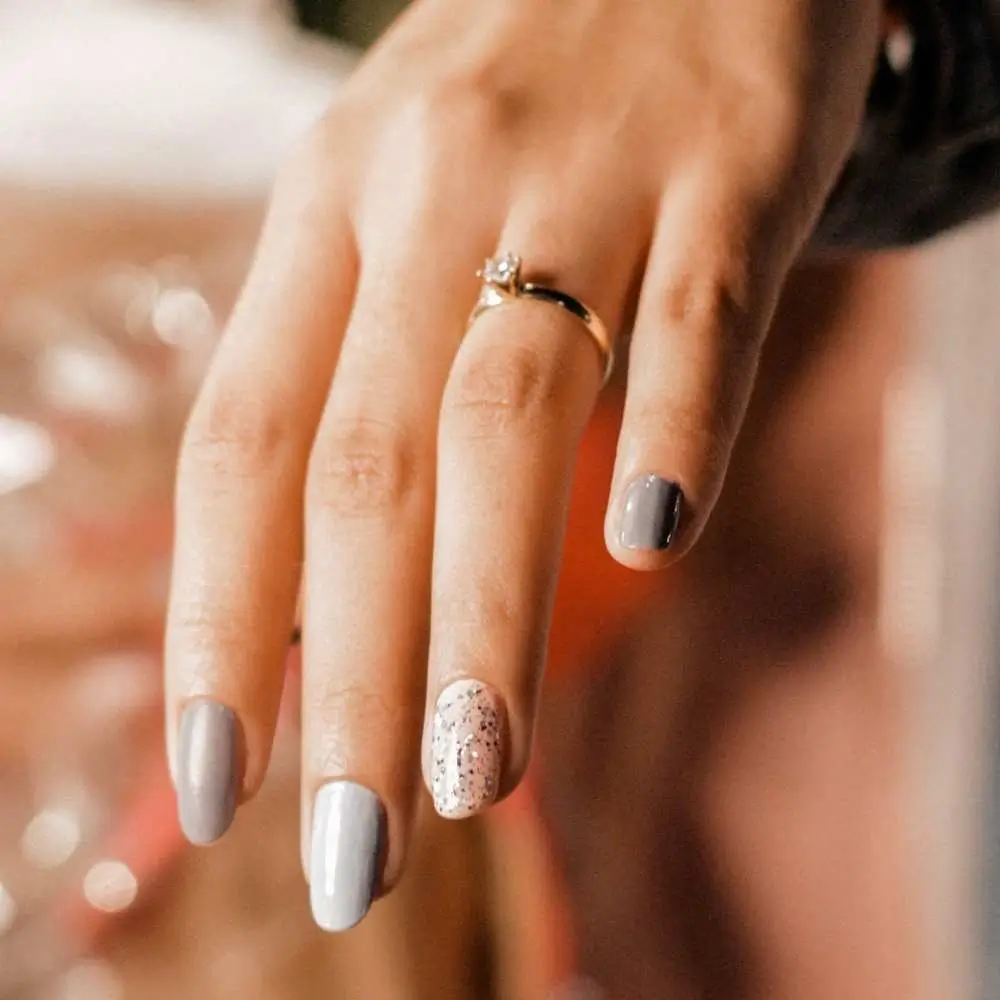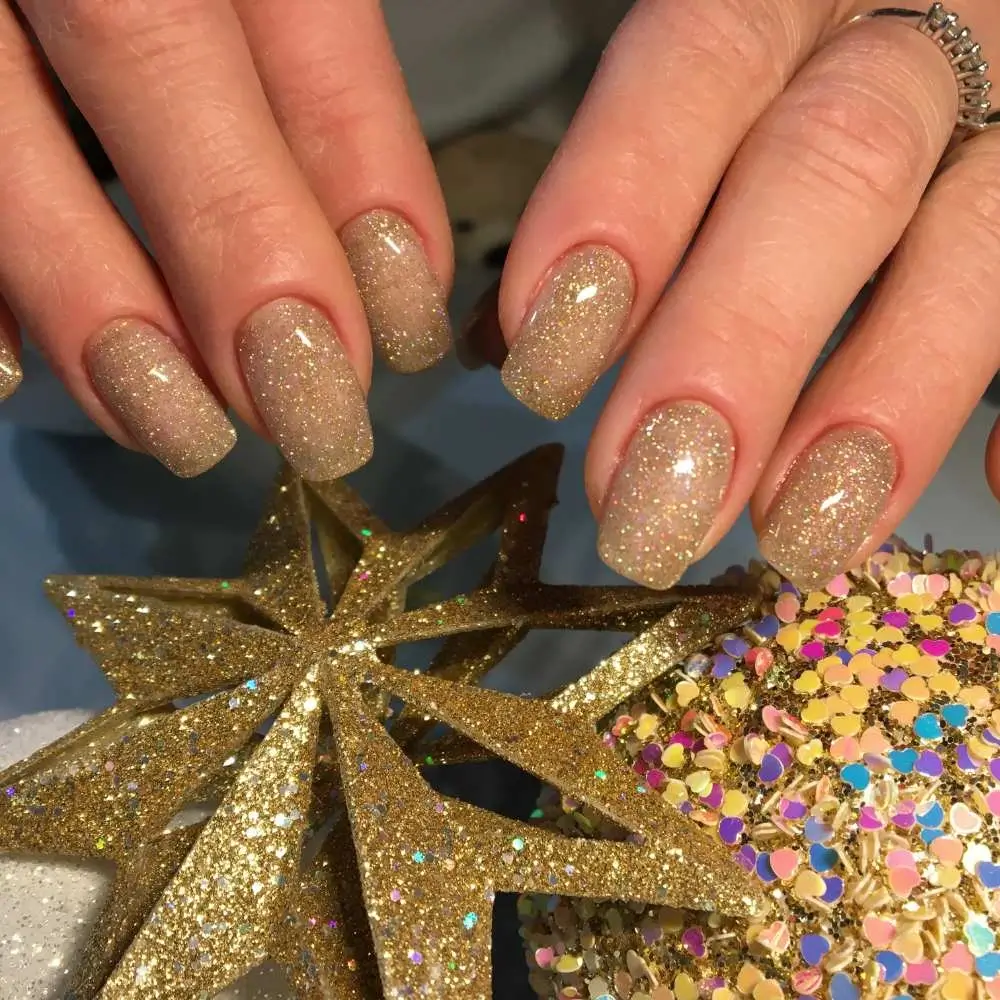Polygel has taken the nail world by storm, but before you dive headfirst into this new trend, let's have a little chat. Picture this: you're in the middle of a nail party with your besties, and someone asks, "Hey, can we use Polygel as glue for press-on nails?" You pause, unsure of what to say. Fear not, nail enthusiasts! We've got the short answer and all the juicy reasons to keep reading.
The short answer? No, don't use Polygel as glue for press-on nails. But wait, there's more! Stick around as we unravel the mysteries of Polygel, explore its dos and don'ts, and reveal some hilarious anecdotes about nail fails you'll want to avoid. So grab your nail file and a cup of tea, and let's dive into the fabulous, sometimes confusing, world of Polygel!

Polygel Panic: The Press-On Nail Dilemma You Need to Avoid!
Picture this: you're in the midst of a fabulous nail session when suddenly, you discover you're out of glue. Yikes! So, you wonder, can I use Polygel as glue for my press-on nails? It's pretty similar, isn't it?
Nope, not even close. Don't even think about using Polygel as glue for your press-ons. Trust me, it's not a good idea, and here's why.
Firstly, Polygel isn't meant for nails. Surprise! It's actually designed for scalp micropigmentation (a type of tattooing). So even if you manage to stick it to your nails (which is unlikely), it's not going to be a happy ending for your lovely nails – they could end up damaged.
Secondly, Polygel is super stubborn to remove. We all know how essential it is to give our natural nails some breathing space by taking off press-ons every now and then. But with Polygel, you'd need professional help to get rid of it, which totally defeats the purpose of DIY nails at home.
So, the verdict on using Polygel as glue for press-on nails? Don't do it! Stick to nail glue, and your nails will thank you. Finding the right nail glue can be tricky, but don't worry, I've got your back. I've done the research and found the best nail glue for press-on nails to suit any budget. So go ahead, click the link, and start shopping for the perfect nail glue!

Reasons Why Polygel is Not Suitable as Glue for Press-on Nails
Polygel has gained popularity in the nail industry for its unique properties and versatile applications. However, it's essential to understand that not all nail products are created equal or suitable for every purpose. In this article, we'll discuss why Polygel isn't the best choice for attaching press-on nails and what alternatives you should consider instead.
Polygel's Intended Purpose
First and foremost, it's crucial to understand that Polygel was designed specifically for sculpting and building nail extensions or overlays. Its unique hybrid formula combines the best characteristics of acrylic and gel nails, making it easy to work with and highly adaptable to various nail shapes and lengths.
While it may be tempting to use Polygel as an adhesive for press-on nails due to its bonding properties, this is not its intended purpose. Using it for this application could result in less-than-ideal outcomes and potential damage to your natural nails.
Incompatibility with Press-on Nails
Press-on nails are typically made from lightweight plastic materials, which are not compatible with the chemical composition of Polygel. This means that Polygel may not adhere properly to the surface of press-on nails, resulting in a weak bond that is prone to lifting or premature detachment.
Moreover, the curing process required for Polygel (i.e., using an LED or UV lamp) can cause the plastic material of press-on nails to warp or become damaged, further compromising their appearance and longevity.
Difficulty in Application and Removal
Applying Polygel requires a certain level of skill and precision since it involves brushing and sculpting the product onto the nail surface. This can be challenging for those unfamiliar with the process, especially when trying to attach press-on nails securely.
In contrast, traditional nail glue is much easier to apply, as it typically involves a simple brush-on or squeeze bottle application, allowing for a more controlled and precise bonding process.
When it comes to removal, Polygel must be soaked off with acetone and gently filed away. This process can be time-consuming and potentially damaging to your natural nails if not done correctly. Using an adhesive specifically designed for press-on nails, such as nail glue or adhesive tabs, will make the removal process much simpler and less damaging to your nails.
Alternatives to Polygel for Press-on Nails
Although Polygel isn't suitable for attaching press-on nails, there are several other options available that are specifically designed for this purpose. Traditional nail glue, as mentioned earlier, is a popular choice due to its strong bonding properties and ease of application. Another alternative is adhesive tabs, which are double-sided sticky tabs that can be applied directly to the nail surface and press-on nail for a secure and temporary bond.
While Polygel is an innovative and versatile nail product, it's essential to recognize its limitations and intended use. For attaching press-on nails, it's best to stick with products specifically designed for this purpose, such as traditional nail glue or adhesive tabs. By using the appropriate products and techniques, you'll ensure the best possible results and maintain the health and integrity of your natural nails.

Alternative Adhesives Recommended for Attaching Press-on Nails
While Polygel has become a popular choice for creating nail extensions and overlays, it's not the ideal adhesive for attaching press-on nails. Instead, there are other products specifically designed for this purpose that provide a secure bond and easy removal. In this article, we'll explore alternative adhesives recommended for attaching press-on nails, so you can achieve a flawless and lasting manicure.
Traditional Nail Glue
One of the most common adhesives used for attaching press-on nails is traditional nail glue. Made from cyanoacrylate, a powerful bonding agent, nail glue creates a strong and durable bond between your natural nails and the press-on nails. Some advantages of using nail glue include:
- Quick drying: Nail glue dries rapidly, allowing for efficient application and reduced waiting time.
- Easy to apply: The brush-on or squeeze bottle applicator makes it simple to apply the right amount of glue to both your natural nail and the press-on nail.
- Strong bond: The strength of the adhesive ensures that your press-on nails stay in place for an extended period, typically up to two weeks.
However, keep in mind that nail glue can be challenging to remove and may cause damage to your natural nails if not removed correctly.
Adhesive Tabs
Another popular alternative to Polygel for attaching press-on nails is adhesive tabs. These double-sided sticky tabs are designed specifically for temporary nail enhancements and offer several benefits:
- Non-damaging: Adhesive tabs are less likely to cause damage to your natural nails, as they don't require soaking in acetone for removal.
- Easy to apply: Simply peel off the backing, attach the tab to your natural nail, and press the press-on nail firmly onto the tab.
- Temporary wear: Ideal for those who want to switch up their nail designs frequently, adhesive tabs typically last for a few days up to a week.
However, adhesive tabs may not provide as strong a bond as nail glue, and they may not be suitable for those who require a longer-lasting manicure.
Brush-on Gel Resin
For individuals looking for an alternative that falls between traditional nail glue and adhesive tabs, brush-on gel resin is worth considering. This adhesive offers a secure bond similar to nail glue but with added flexibility, making it less prone to cracking or lifting. Some benefits of using brush-on gel resin include:
- Flexible bond: The gel-like consistency provides a more flexible bond, allowing your press-on nails to move with your natural nails.
- Easy application: The brush applicator makes it simple to apply an even layer of adhesive to both your natural nail and the press-on nail.
- Long-lasting: When applied correctly, brush-on gel resin can last up to two weeks or more, providing a durable option for press-on nails.
Keep in mind that, like nail glue, brush-on gel resin may require soaking in acetone for proper removal.
While Polygel is an excellent product for nail enhancements like extensions and overlays, it's not the best choice for attaching press-on nails. By exploring alternative adhesives such as traditional nail glue, adhesive tabs, or brush-on gel resin, you can achieve a beautiful and lasting press-on manicure without compromising the health of your natural nails.

Proper Application and Removal Methods for Press-on Nails
Polygel has become a popular choice among nail enthusiasts for achieving beautiful nail extensions and overlays. However, when it comes to press-on nails, other products such as traditional nail glue or adhesive tabs are better suited. To ensure the longevity and health of your natural nails while using press-on nails, it's essential to follow proper application and removal methods. In this article, we'll guide you through the best practices for applying and taking off press-on nails.
Preparing Your Nails for Application
Before applying press-on nails, it's crucial to prepare your natural nails properly. Here are the steps to follow:
Clean your nails: Remove any existing nail polish or residue using a gentle, non-acetone nail polish remover.
Trim and file: Trim your natural nails to a comfortable length and shape them with a nail file. This will help ensure a smooth surface for the press-on nails to adhere to.
Push back cuticles: Gently push back your cuticles using a cuticle pusher or an orangewood stick. This helps create a clean and even surface for the press-on nails
Buff and cleanse: Lightly buff the surface of your natural nails to remove any shine or oils. Then, cleanse your nails with rubbing alcohol to remove any remaining dust and oils.
Applying Press-on Nails
Now that your nails are prepped, it's time to apply the press-on nails. Follow these steps for a secure and lasting application:
Choose the right size: Select the press-on nails that best fit each of your natural nails. They should cover your entire nail bed without extending onto your skin or cuticles.
Apply adhesive: If using nail glue, apply a thin layer to both your natural nail and the back of the press-on nail. If using adhesive tabs, place the tab onto your natural nail and press firmly to secure it in place.
Attach the press-on nail: Carefully align the press-on nail with your natural nail, starting at the cuticle and gently pressing down towards the tip. Hold the press-on nail in place for a few seconds to ensure a strong bond.
Removing Press-on Nails
To maintain the health of your natural nails, it's essential to remove press-on nails carefully and correctly. Here's how:
Soak your nails: Fill a small bowl with warm water and a few drops of soap or oil. Soak your nails for 10-15 minutes to help soften the adhesive.
Gently lift the edges: Use an orangewood stick or a cuticle pusher to gently lift the edges of the press-on nails. Be patient and avoid using excessive force, as this can damage your natural nails.
Remove the nails: Once the edges are lifted, gently slide the orangewood stick or cuticle pusher under the press-on nail and continue to lift until the nail is completely removed. If you encounter resistance, soak your nails for a few more minutes and try again.
Clean and nourish: After removing the press-on nails, cleanse your natural nails with rubbing alcohol to remove any remaining adhesive residue. Finally, apply a nourishing cuticle oil or nail strengthener to keep your nails healthy and strong.
While Polygel is a fantastic product for nail extensions and overlays, it's not suitable for press-on nails. By following the proper application and removal methods outlined above, you can enjoy beautiful, temporary nail enhancements without compromising the health and integrity of your natural nails.

Your Ultimate Guide to Glue for Press-On Nails – FAQs Unveiled!
Can I use Polygel for press on nails?
While Polygel is undoubtedly a fabulous product for creating dreamy nail extensions and overlays, it's not the go-to choice for attaching press-on nails. But don't fret, nail aficionados! There are plenty of other trusty adhesives like traditional nail glue, adhesive tabs, or brush-on gel resin that'll have your press-on nails looking fab and staying put. So, save that precious Polygel for sculpting those stunning extensions and overlays, and let other adhesives work their charm on your press-on nails!
Can I glue fake nails with Polygel?
Polygel, a marvelous concoction for crafting gorgeous nail extensions and overlays, isn't actually designed for gluing fake nails. But don't let that burst your nail art bubble! There are plenty of other reliable adhesives – like good ol' nail glue, adhesive tabs, or brush-on gel resin – that are perfect for bonding fake nails securely. So, reserve that magnificent Polygel for sculpting show-stopping extensions and overlays, while letting other adhesives work their wonders on your fabulous fake nails!
What can I use instead of glue for press on nails?
While Polygel is a fantastic option for creating luscious extensions and overlays, it's not quite right for attaching press-on nails. Fear not, nail aficionados! There are other clever alternatives that'll do the trick. Consider adhesive tabs, your trusty sidekicks for a temporary yet secure bond, or brush-on gel resin, a longer-lasting option that'll have your nails shining bright like a diamond. So, go on and explore these adhesive wonders, and let your press-on nails dazzle without the need for traditional glue!
Can I use gel nail glue for press on nails?
Gel nail glue, also known as brush-on gel resin, is a fantastic option for securing your press-on nails with style. While Polygel undoubtedly reigns supreme in the realm of nail extensions and overlays, gel nail glue is ready to take center stage when it comes to press-ons. This trusty adhesive offers a long-lasting bond, ensuring your nails stay fabulous and intact for days on end. So, go ahead and let gel nail glue work its magic on your press-on nails, giving you the confidence to flaunt those gorgeous digits wherever you go!
What kind of glue can you use on fake nails?
While Polygel is a star player when it comes to sculpting beautiful extensions and overlays, it steps aside when it's time to glue fake nails. Enter the dynamic duo of traditional nail glue and brush-on gel resin! These trusty adhesives are here to save the day, offering a strong bond that'll keep your fake nails looking fabulous for days or even weeks. And let's not forget adhesive tabs, the unsung heroes for those seeking a temporary yet secure attachment. So, go ahead and take your pick from these adhesive champs, ensuring your fake nails stay put while you rock your nail art with pride!
Read our article about best nude nail polish here!
Read our article about best hair brush for fine hair here!







